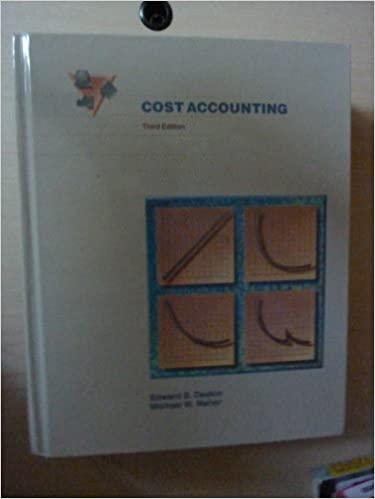Standard Costing in a Demand-Pull Environment: Ell-A Fear manufactures sport shoes. The company produces goods as orders
Question:
Standard Costing in a Demand-Pull Environment: Ell-A Fear manufactures sport shoes. The company produces goods as orders are received. Hence, inventories are maintained at very low levels. An order was received for 5,000 pairs of the Shootout Running model. Standard costs for these shoes are:

Direct materials costs are based on expected usage of precut materials which are available in a complete package for each pair of shoes. That is, for each package of materials, expected good output is one pair of shoes. While producing this order, Ell-A Fear had to purchase materials for $4.27. The extra cost was incurred to obtain the raw materials sooner than was expected. Due to an equipment malfunction, 50 packages of materials were destroyed. These 50 packages were replaced at a cost of $4.27 per package. Direct labor costs were $7,200, and the rate was $5.20 per direct labor-hour. Actual overhead costs exceeded the planned rate by 8 cents per machine-hour. A total of 2,750 machine-hours was required. The extra machine-hours were primarily caused by the equipment malfunction. Ell-A Fear charges all costs directly to Cost of Goods Sold at standard. Variances are identified and charged to a separate account: Manufacturing Variances Expensed. Not all of the Shootout Running model shoes ordered had been shipped at the end of the period. Fifty pairs were still on hand in the shipping area at the end of the period.
Required: Use T-accounts to show the cost flows for these events.
Step by Step Answer:






